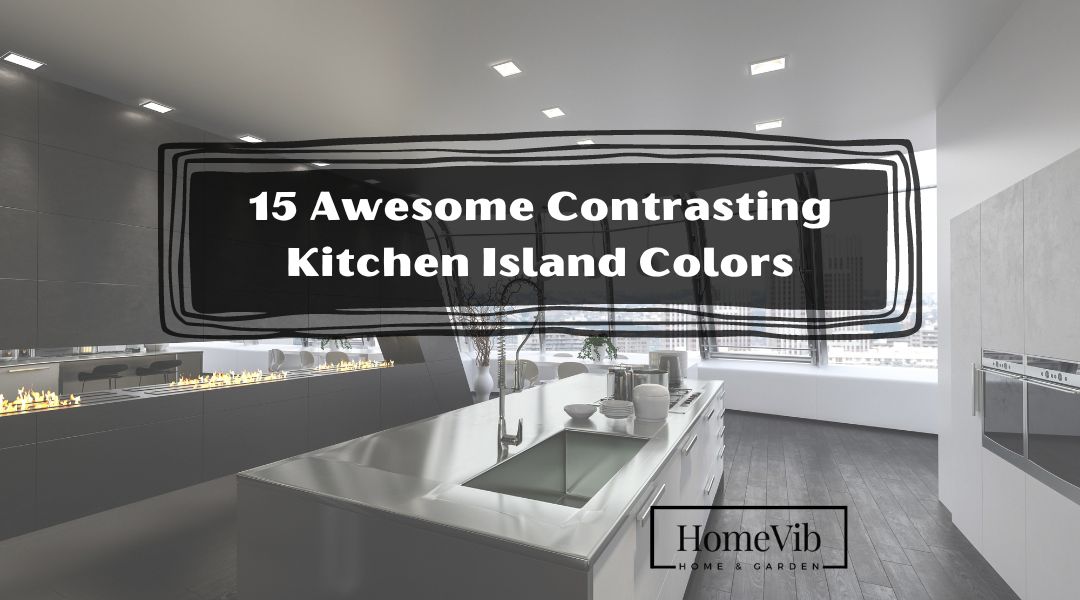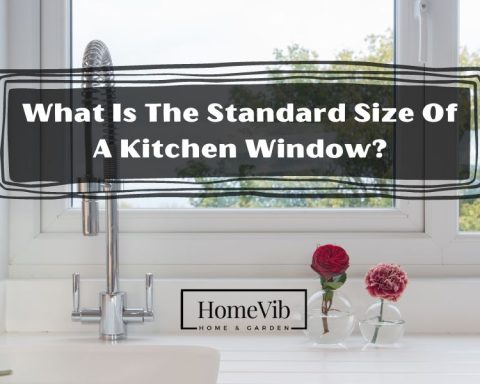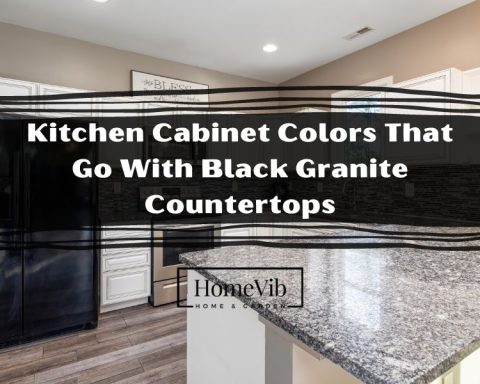A kitchen island is a freestanding table cabinet fixture typically placed in the middle of the kitchen. This type of kitchen serves various purposes such as meal preparation or dining table.
Therefore, the design and color combination of the fixture should blend with the interior design of the kitchen. But you can make contrasting colors if you like as long as it matches the style of the space.
So what are the best contrasting kitchen island colors?
The most popular colors for contrasting kitchen colors are blue and gray because they match dark and light tones. However, you can choose other color combinations.
And for this article, I will share 10 of the best contrasting kitchen island color recommendations you can try in your home.
How to Choose Kitchen Island Color?
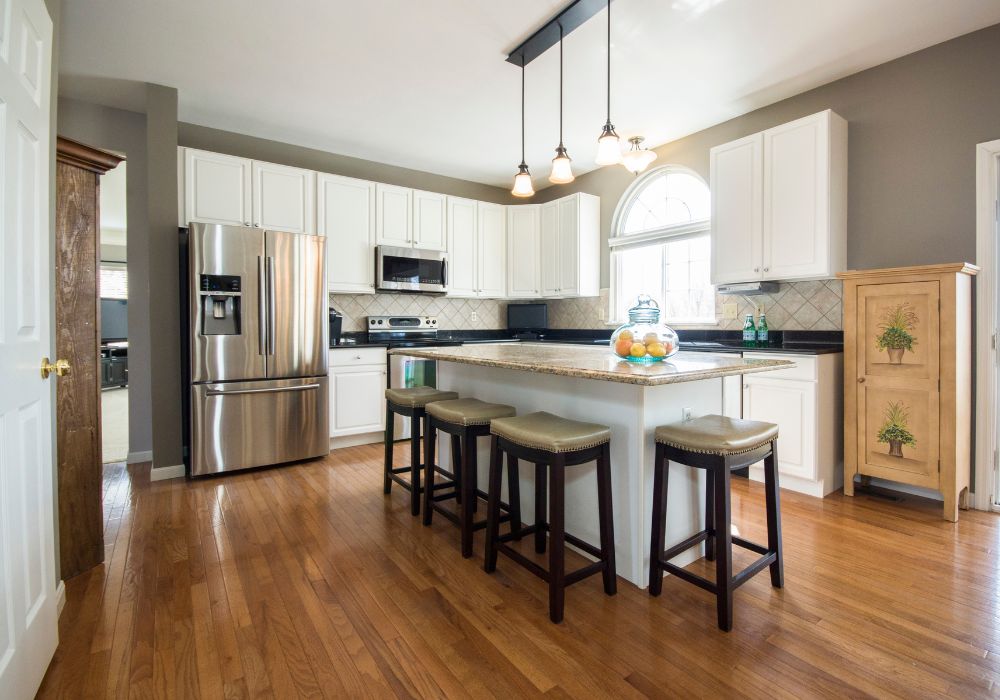
Choosing contrasting colors may seem counterintuitive if you are decorating your home – such as, in this case, your kitchen. However, contrasting colors add vibrance to the area.
Below are the considerations you have to address when choosing a kitchen island color.
- Size of the Kitchen – yes, the size of the kitchen island color matters. A fixture with a darker tone is more appropriate if the space is small. A lighter color somehow makes the area more spacious if you have limited space.
- Cabinet Colors – the kitchen island color should blend with the kitchen cabinets
- Kitchen Countertop – in addition to the color, the kitchen island should match the materials used to make the kitchen countertop. Is the countertop granite, marble, or quartz?
- Position of the Kitchen Island – is the kitchen island in the middle or attached to the walls? The position of the kitchen island allows you to blend various colors and themes.
The following section of this article is the best recommendation for contrasting kitchen island colors if you are unsure how to address the matter.
15 Great Choices For Contrasting Kitchen Island Color
Below are the 15 best contrasting kitchen island colors you can try for your kitchen.
1. Farm House Kitchen Paint with Oak Cabinets
For this kitchen setup, the area has light paintings of dove white, neutral ground, and rainwashed with a rosemary kitchen island base color and dove white countertop.
The color combination also works well with oak woods.
2. White Cabinets and Black Kitchen Island and Fixture
Sticking with the traditional combination of black and white is still trendy. It is a perfect option if you aim for a minimalistic vibe and don’t want to stress yourself over the many colors available.
3. White Kitchen and Navy Blue Kitchen Island
A kitchen embellished with white interiors is flexible, and you can combine them with a fixture that has light and dark colors. In this case – a navy blue kitchen island will work wonders, especially if they are placed in the middle of the area.
4. Two-Tone Kitchen Island
A kitchen with two-tone is the perfect interior design, especially if you aim for a minimalistic yet elegant vibe. You can go for the traditional black-and-white kitchen.
But if you want a different color other than the traditional two-tone color, you can try our recommendation of combining highly reflective white and gray harbor.
5. Off-White Kitchen with Wood Grain Countertop and Brilliant Blue Kitchen Island
An off-white kitchen cabinet and walls prevent too much natural light that becomes uncomfortably reflective. You can pair the color with a center kitchen island with a wood grain countertop and brilliant blue base.
6. White Pentagon Kitchen Island
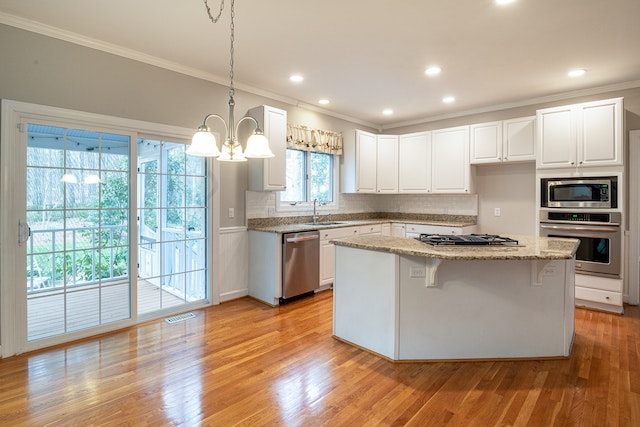
If the area has sufficient space, you can experiment with kitchen islands of various shapes and sizes.
Instead of the regular long-table kitchen island, you can try a white pentagon kitchen island in the middle of the room.
7. Sunset Peach Kitchen Walls and Granite Side Kitchen Island
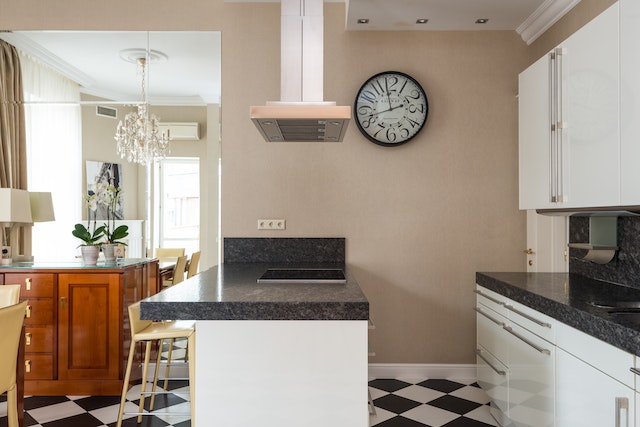
Combining light and dark colors in the home is not limited to solid base tones like black and white.
One of the best ways to utilize a contrasting monochrome shade is with this beautiful granite kitchen island with sunset peach kitchen walls.
8. Burgundy Walls and Dark Marble Kitchen Island
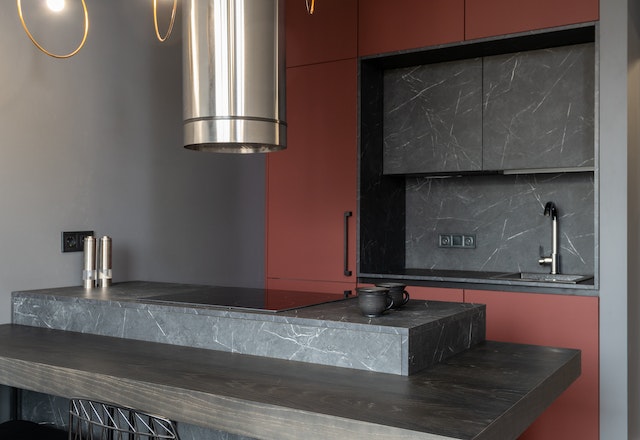
You can also blend dark colors with other dark colors that form minimalistic yet elegant interiors for the area.
One perfect combination is mix-and-matching a dark marble kitchen island and the strong tones of burgundy kitchen walls.
9. Nifty Turquoise Cabinet Kitchen Island
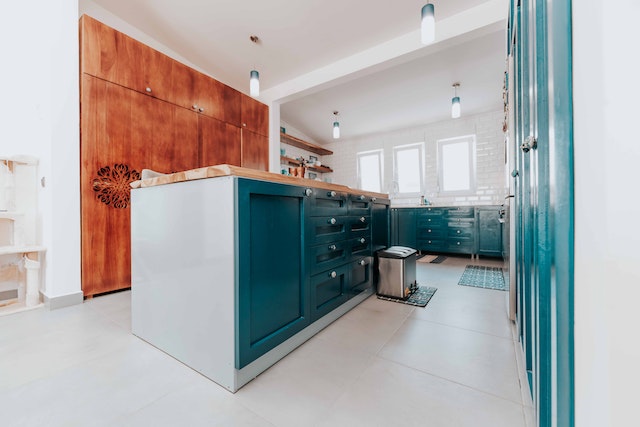
A kitchen with mild shades of colors attracts white, but you can paint tones of dark colors to the area, such as the kitchen cabinets and kitchen island drawers.
As a result, it adds elegance to the room while making the area spacious.
10. Dark Wood Cabinets and Light Wood Flooring

Matching wood with another type of wood is another excellent idea to maximize the material’s natural beauty fully.
If you want the kitchen island to be the centerpiece, you can make the fixture with darker wood.
11. Hunter Green Kitchen Island
Green’s relaxing element makes them desirable for the home’s interiors. Hunter green has a solid tone yet a relaxing vibe, and painting your kitchen island with this island is perfect for areas with wood flooring and brick walls.
12. Dark Wood Grain Kitchen Island with Marble Countertop
A dark wood grain and semi-faded kitchen island emit a classical vibe perfect for larger spaces. You can complement the dark wood with a white marble countertop.
13. Solid Marble and Wooden Under Cabinets
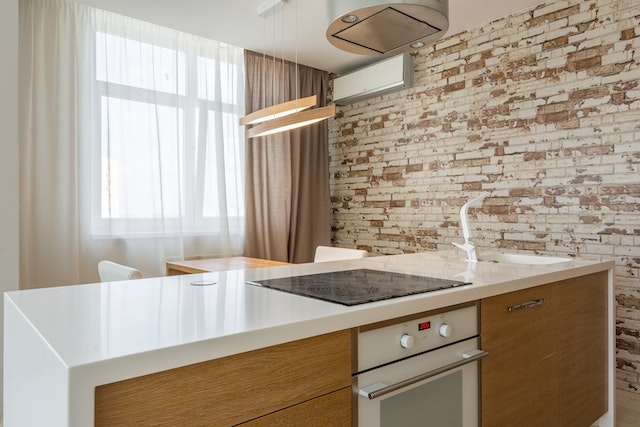
A kitchen island covered entirely covered of marble is a little pricey. However, this type of kitchen island can improve the room’s overall aesthetics since they are flexible and can blend in any design.
14. Black and White Kitchen with Pale Wood Kitchen Island
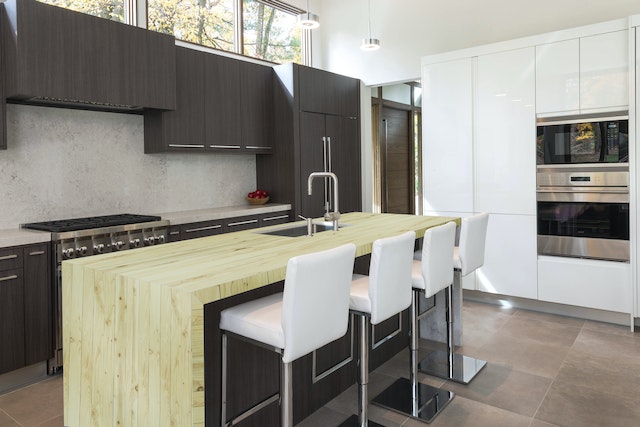
A kitchen island with pale wood on its side and countertop also match a black and white kitchen.
15. Aqua Blue Kitchen Island with Trims of Light Blue Walls and Mint Green Fixtures
Pairing a darker variety of a primary color with another lighter color is an excellent way to take full advantage of one color.
And a perfect example here is an aqua Blue Kitchen Island with trims of light blue walls and mint green fixtures.
Can a Kitchen Island Be Two Different Colors?
Contrasting colors are not necessary if you aim for a practical interior design. However, contrasting colors add vibrance and style to the kitchen.
Mixing and matching dark and light colors to make one section of the kitchen prominent from the rest.
Can Your Island Countertop Be a Different Color?
Again, you can either make the countertop and base of the kitchen contrasting or the same, depending on your preferences.
Each concept emits unique aesthetics that complement the interior design of the kitchen.
Should the Island Be Lighter Or Darker Than the Cabinets?
If you aim to make the kitchen island prominent and stand out, opting for a kitchen island darker than the cabinets is an excellent choice.
A good example is blending a dark mahogany finished kitchen island with a kitchen with walls and cabinets with lighter colors that complement the area’s centerpiece.
Matching Kitchen Island Colors for Open Floor Plans
You may have the temptation to be trigger-happy with the kitchen colors, especially if you are designing the area for the first time.
You have to remember that an excessive amount of colors is off-putting, and it may come out as awkward instead of making your kitchen stylish.
The general rule of thumb here is to stick with a maximum of five colors – one primary light color, two supporting colors, and two neutral colors.
Other Recommendations For Choosing a Contrasting Kitchen Island Color
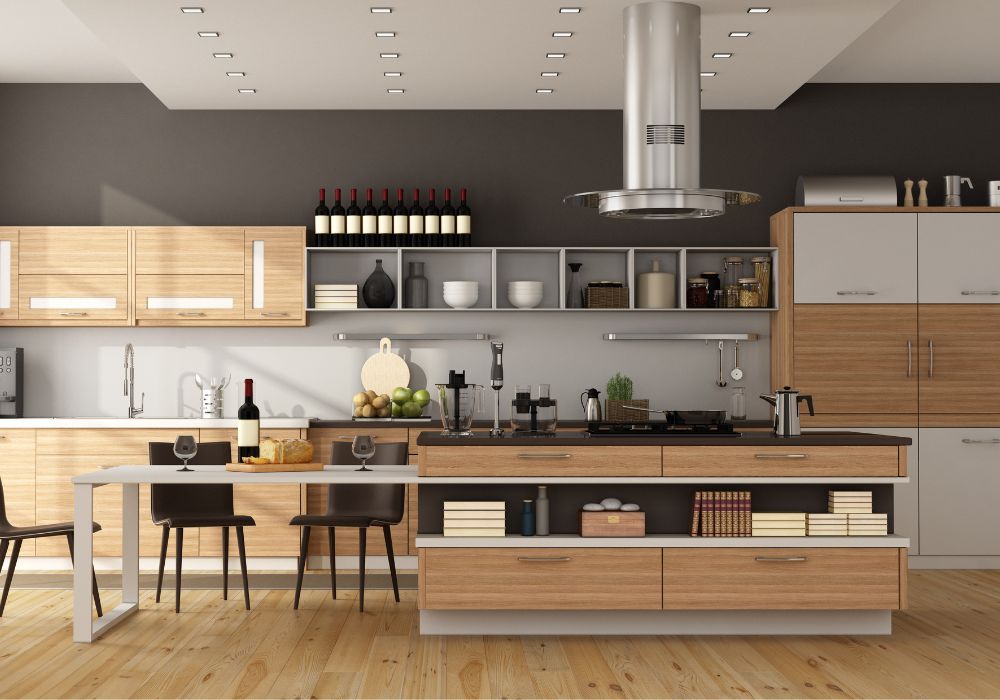
The sky is the limit when decorating or renovating your kitchen. And it all comes down to your preferences and unique sense of style.
The traditional black kitchen island and the white overall kitchen are still a huge trend in modern times. It is simple yet modern and stylish.
The monochrome color of black can sometimes be dull. You can use dark gray instead of solid black to add style to your kitchen.
Such a variety also faintly mutes the contrast against the light color. As a result, the colors complement each other better and make them more attractive.
Black and white is the standard for a practical kitchen design. However, other contrasting colors blend with others fairly well.
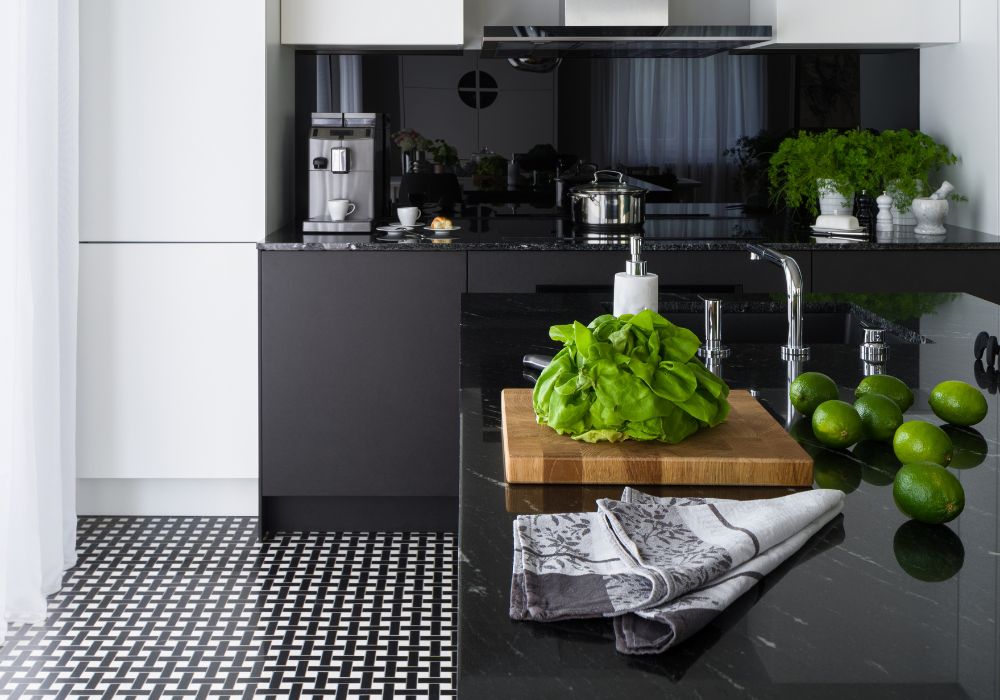
And one good example is the combination of blue and green.
You don’t have to choose base colors of blue and green. Instead, you can opt for color types with the undertones of these primary colors.
Some good examples of the varieties of green you can experiment with are leapfrog, nurture green, pewter green, and courtyard.
On the other hand, some of the popular blue varieties are downing slate, Moscow night, naval, and slate tile.

